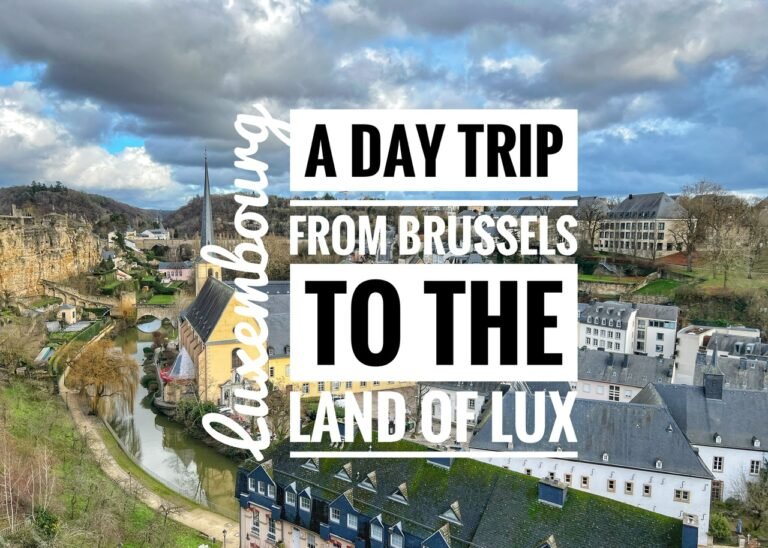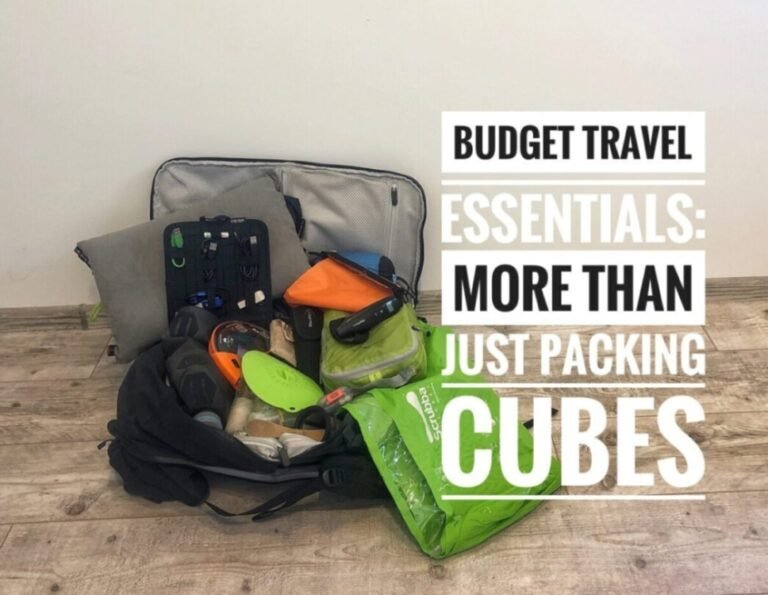
The Orangutan Rehabilitation Center
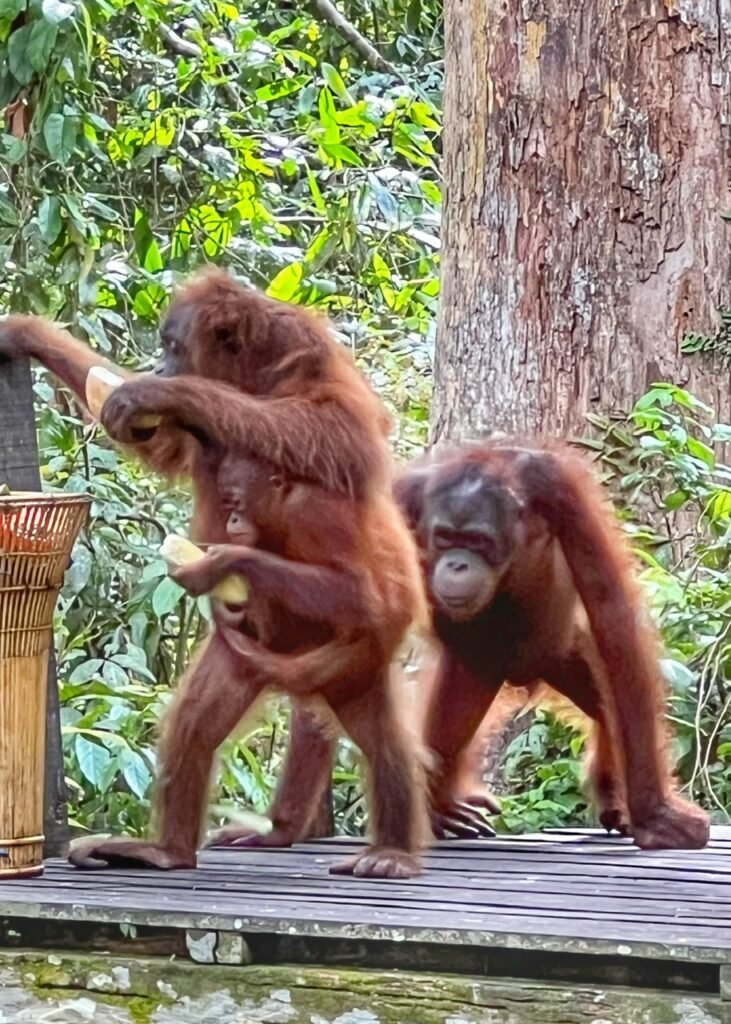
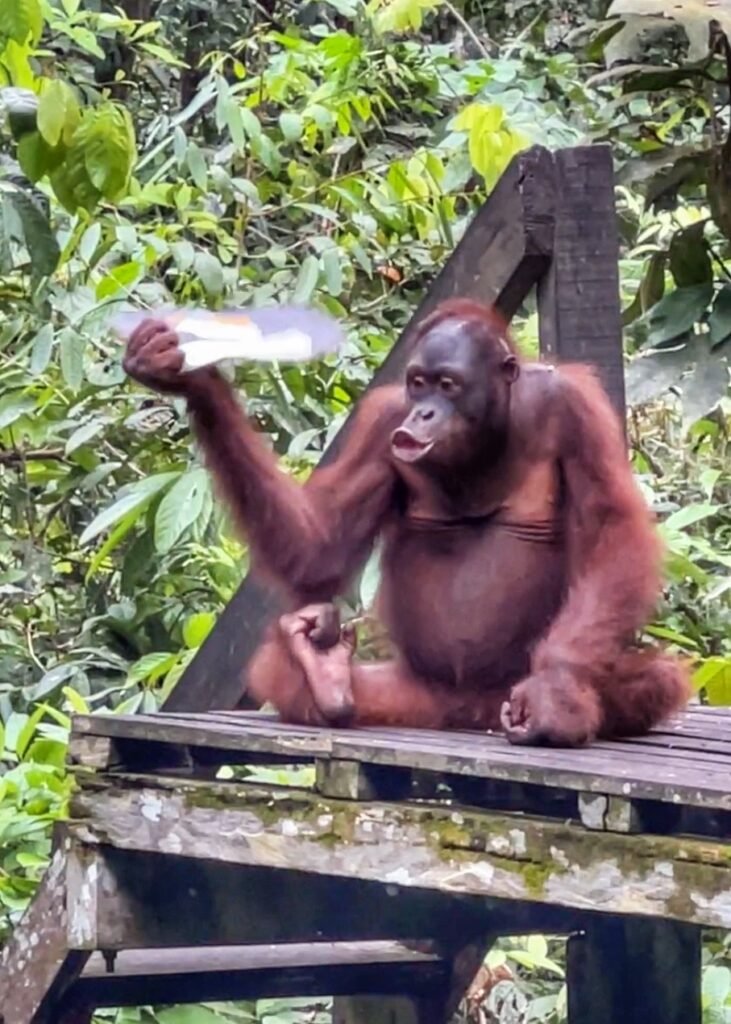
Due to its undeniable resemblance to us, orangutan literally means ‘Man of the Forest’ and the chance to see one of these critically endangered and uniquely fiery-coiffed creatures in the wild is the reason that thousands of tourists flock to Borneo every year.
Of course, there are levels of “wild” and the one that almost everyone can attain is found at Sepilok’s Orangutan Rehabilitation Center. Also, due to their nature of being tree-dwellers it’s likely the only place you’ll see them up close, which was our case. Please note, all facts provided are directly from information at the center.
The center is not a zoo. These apes live in their natural environment and are assisted by humans in five stages to ease their transition back into the wild. There are tragically five reasons they end up here, often at a young age:
- loss of habitat
- being sick or injured
- loss of their mother
- natural disaster
- or illegal pet keeping
At the center, the orangutans need to develop sufficient skills to survive before being released back to the wild.
This one is working on her fanning skills. She’s getting there! 🤣
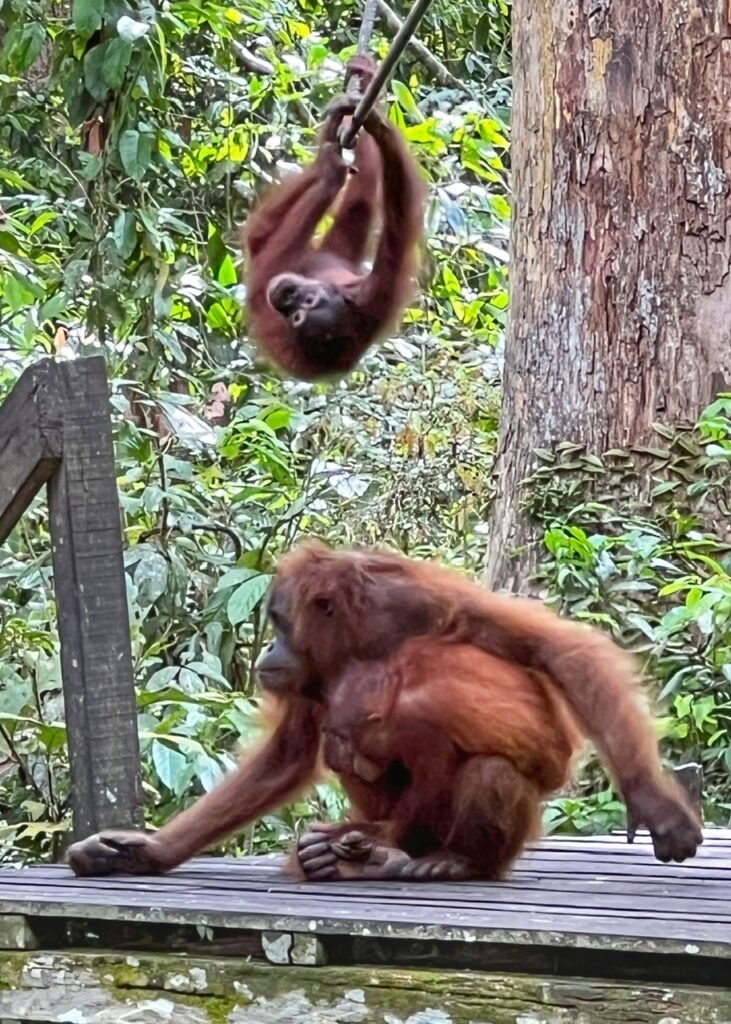
Coming in for a landing!!
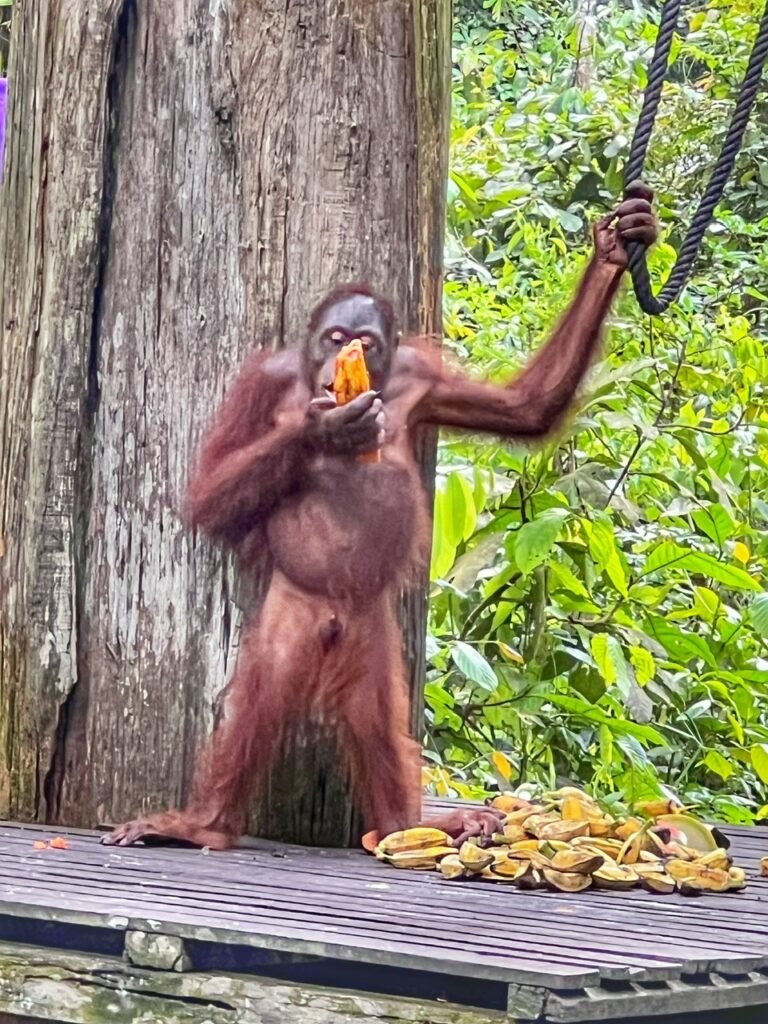
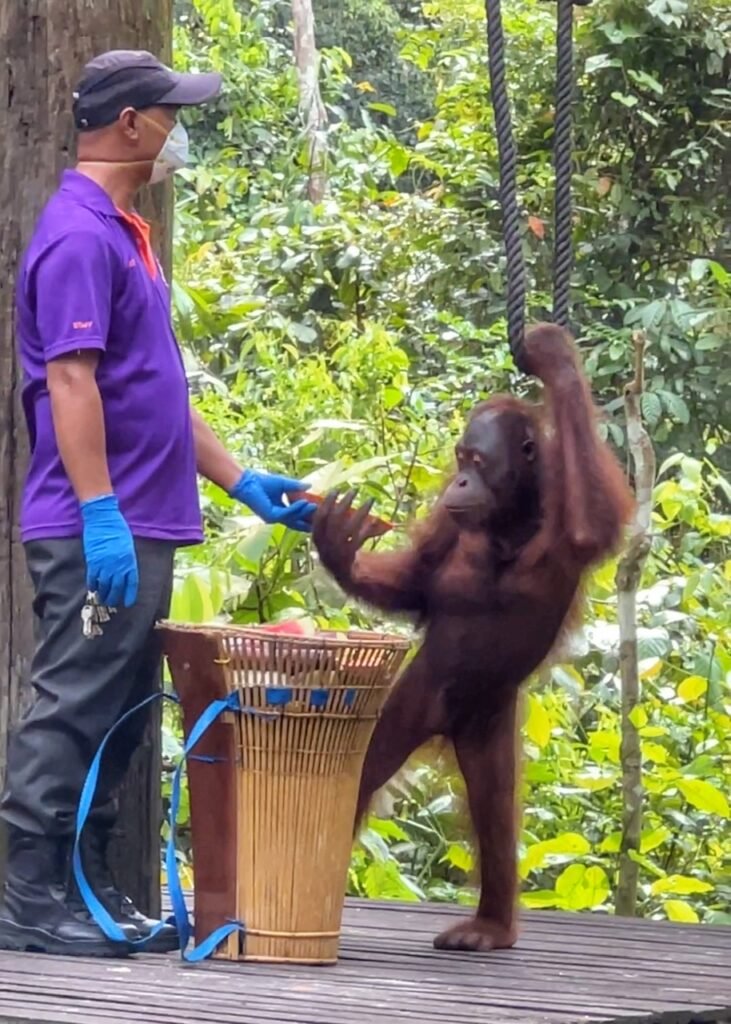
At the fourth stage of rehabilitation, the orangutans are released into the nearby forest, but are still given the opportunity to continue their twice daily fruit feast thanks to the humans. This is when visitors are most likely to see them.
This picky eater seemed to only go for the papaya, mostly preferring the seeds. 🤣
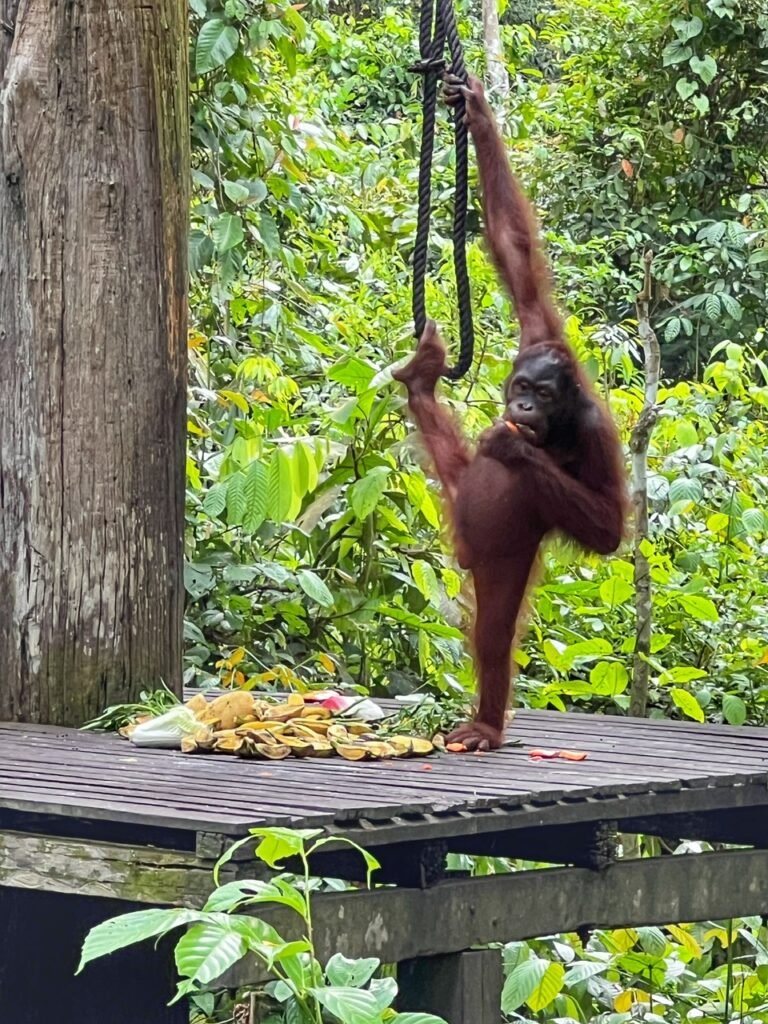
Mandy does a similar pose when she snacks in the kitchen.
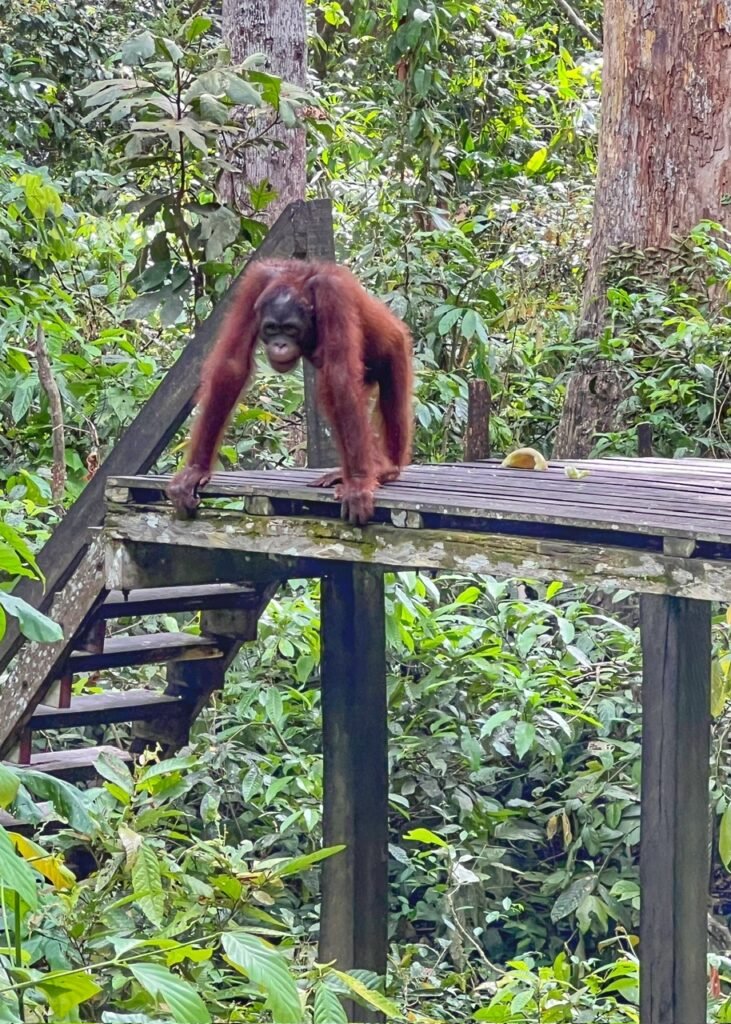
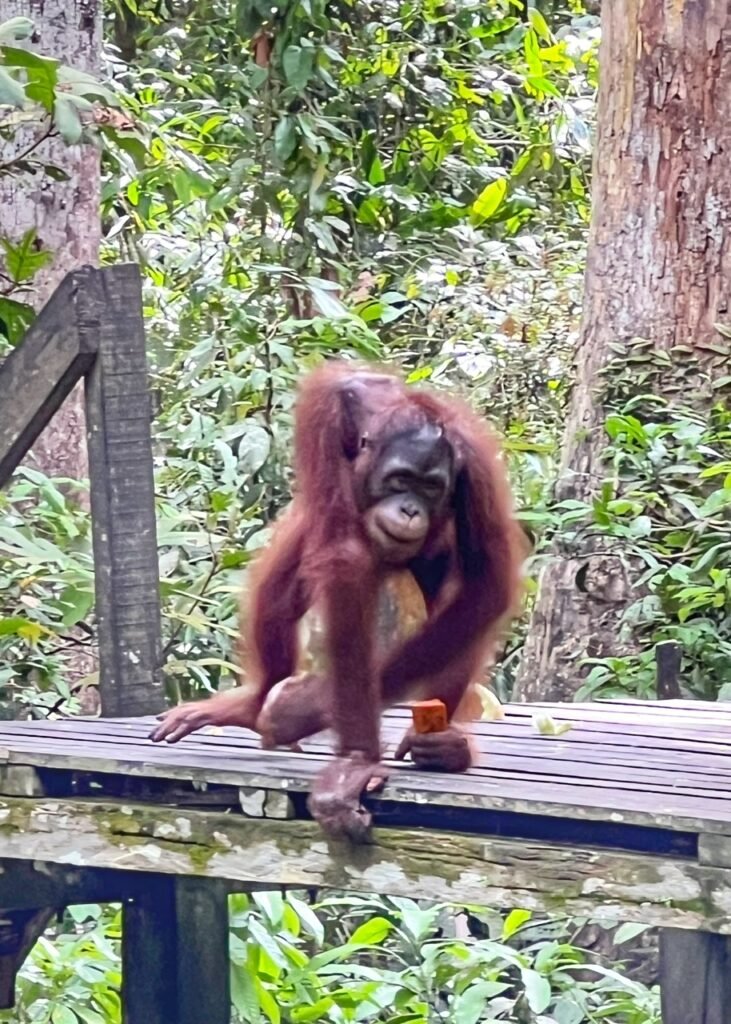

The orangutan is the only great ape outside of Africa. The three others are gorillas, chimpanzees and bonobos. Unlike the orangutan, the other great apes are ground dwelling. What makes them “great apes?” Their DNA. About 96.4% of our DNA are identical to orangutans. Orangutan fossils have been found in southern China, Laos, Vietnam, Sumatra, Java and Borneo. Today they are only found on Sumatra and Borneo.
The difference is the orangutan brain is .6% of its body weight while a humans brain is 2.1% (though that seems to vary from human to human).

This is stage three, the outdoor nursery, which definitely feels much more zoo-ish. The Outdoor Nursery is also known as ‘courage training’. Orangutans are tattooed and for with a microchip to allow easy identification, prior to arriving. Here, their dependence on food and emotional support by the rehabilitation center is gradually reduced. They are given more freedom and encouragement to learn to fend for themselves.
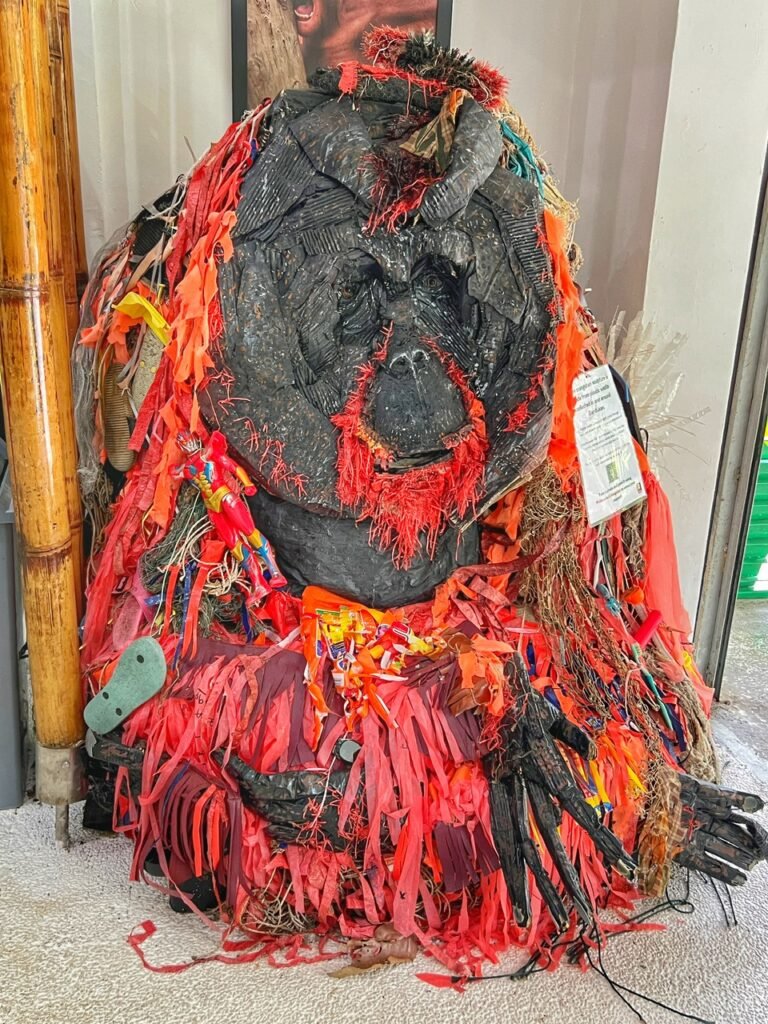
It cost MYR 2500 – 3000 ($530-635), per month to rehabilitate one orangutan. If you are interested in adopting one or donating, check out https://www.orangutan-appeal.org.uk/adopt

There are three types of orangutans left and all are critically endangered. Two types only live on Sumatra (Indonesia) and only have 14,000 and 800 remaining.

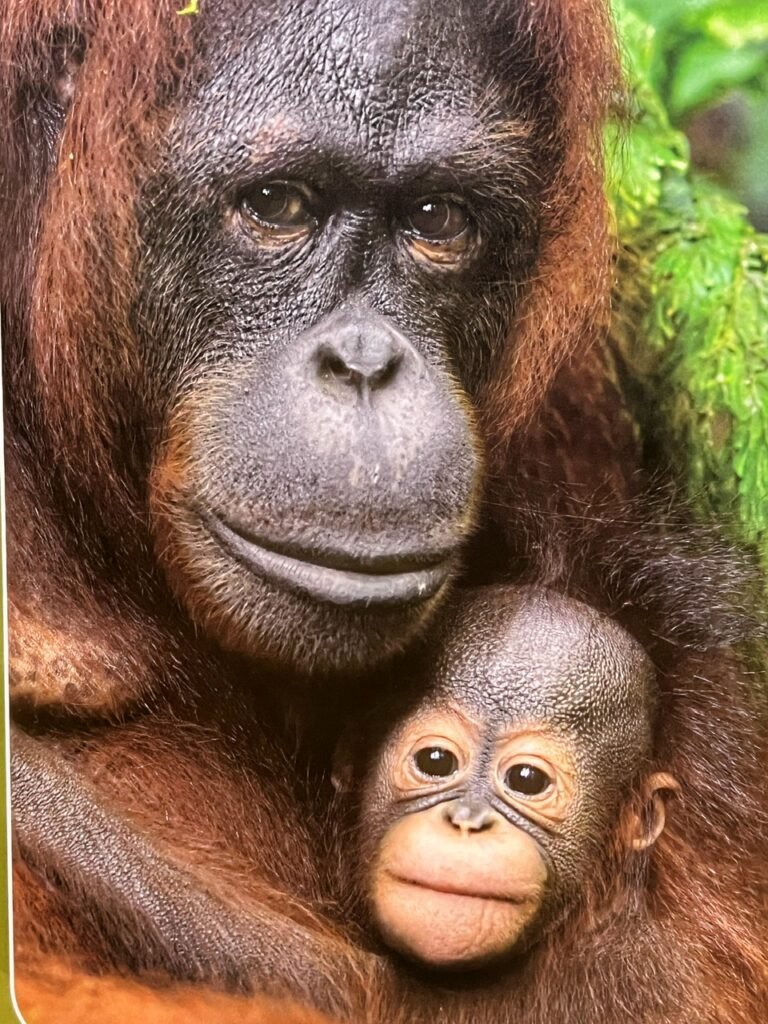
Greg’s paw next to an orangutan paw. A mature adult male orangutan can reach up to 1.4 meters in height (4’6”) and weigh 100 kilos (220 pounds). This other photo above is obviously not ours, but it was too cute not to share. The orangutan has the longest childhood dependence on the mother of any wild animal in the world, even more so than humans. An orangutan mother will nurse its child for about 6 years. A young female will stay close to its mother until its teens, observing mothering skills as it watches its younger sibling being raised by the mother.
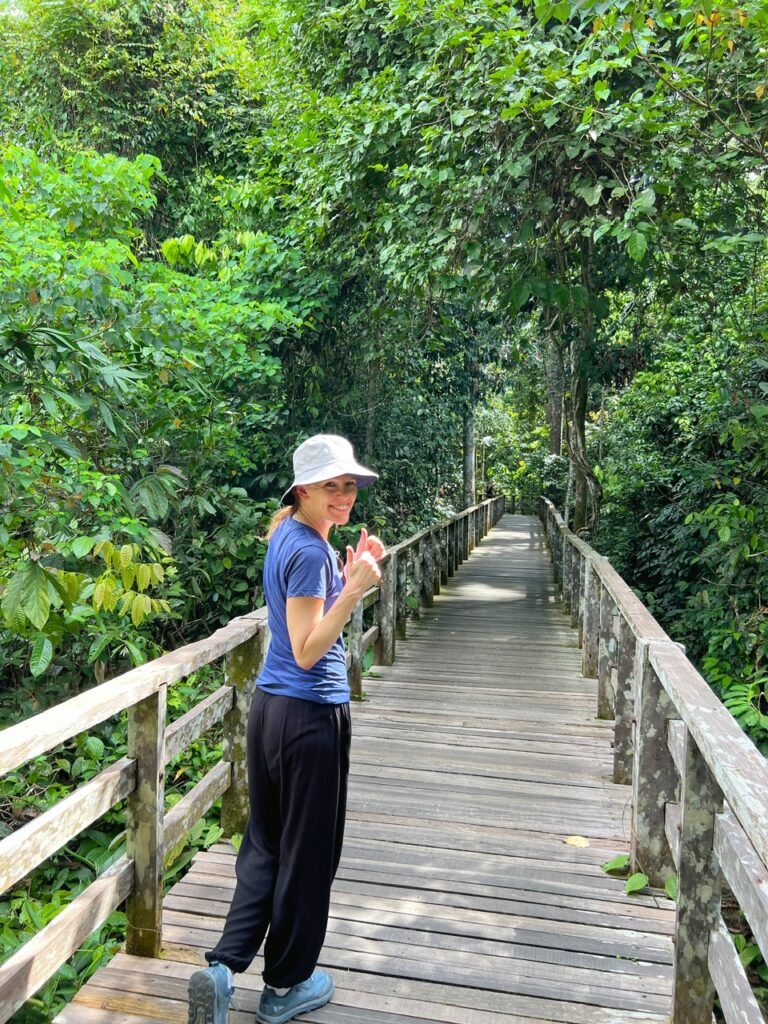
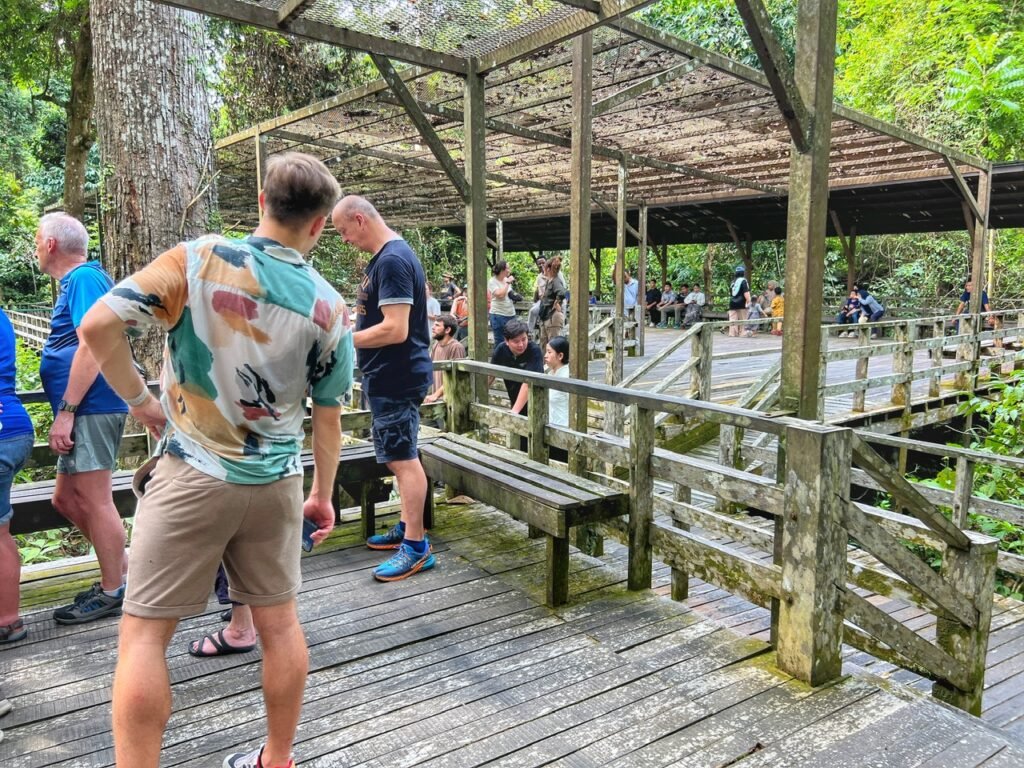
The entrance fee cost ~$6, and included storing all our things in a provided locker. There are two daily feedings, one at 10 am and one at 3 pm. Supposedly during the morning feeding, the platforms are covered in people due to tour groups, so it’s better to go in the afternoon, when it really wasn’t so bad. Upon arrival, you are told to be silent, yet some parent thought it’d be a good idea for her toddler to wear those shoes that sound like squeak toys for the feeding event. Rather than take their annoyance out on the baby, several people took it out on the jabbering Brits. 🤣

We walked about 20 minutes to the center from our accommodation. It is likely you’ll be asked if you’re interested in a ride to the proboscis monkey “sanctuary” after your visit. Proceed with caution on this one. It’s located on a palm oil plantation and from everything we’d read, it seems unethical, but obviously didn’t visit firsthand.
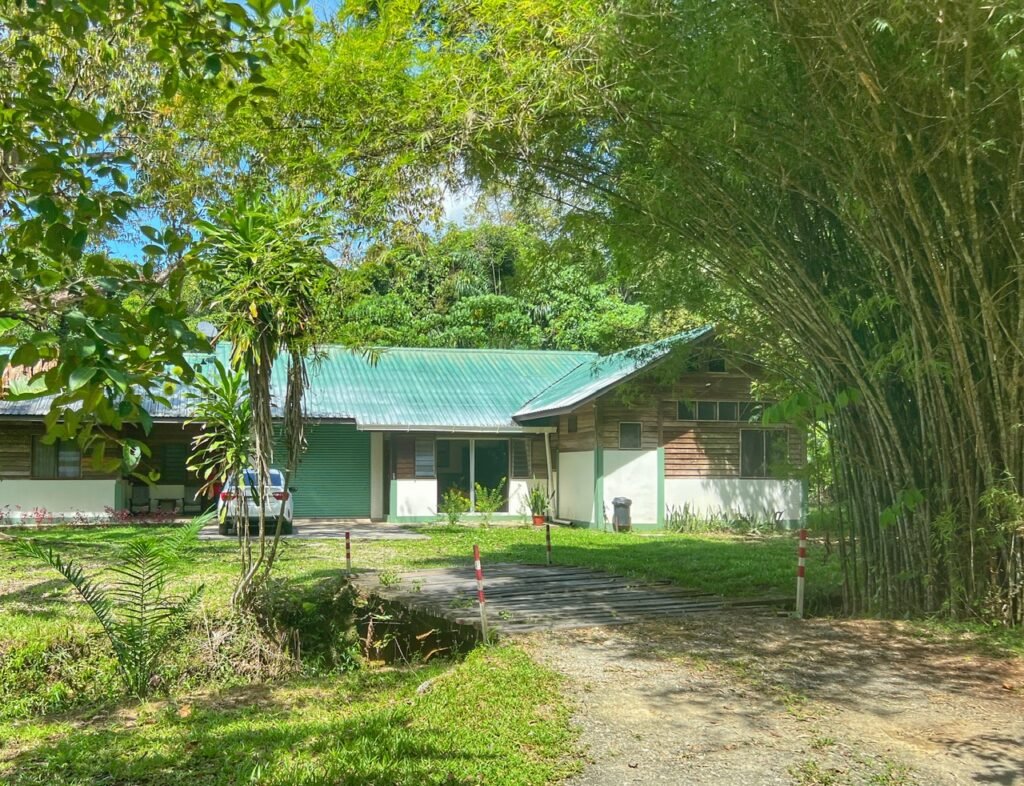
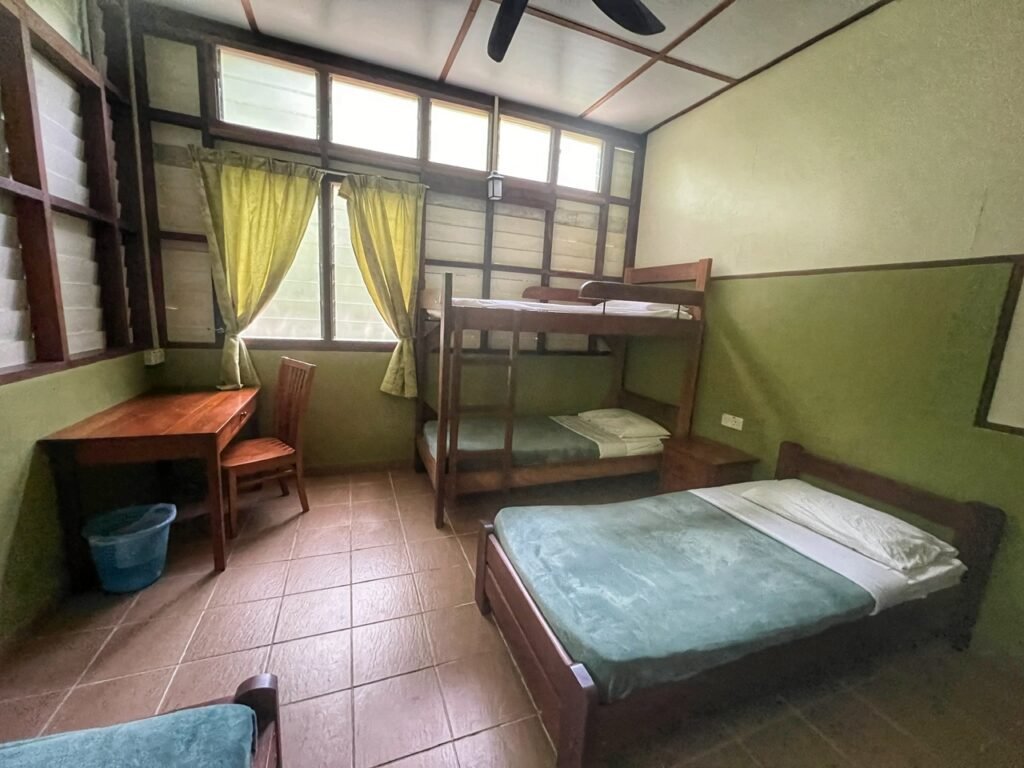
Sepilok B & B, which was a lovely and tranquil place to stay. Our room was over budget at $30/night but had a private bathroom, A/C and breakfast included. It was definitely worth staying a night and we wish we had stayed two…one before, and one after our jungle experience.
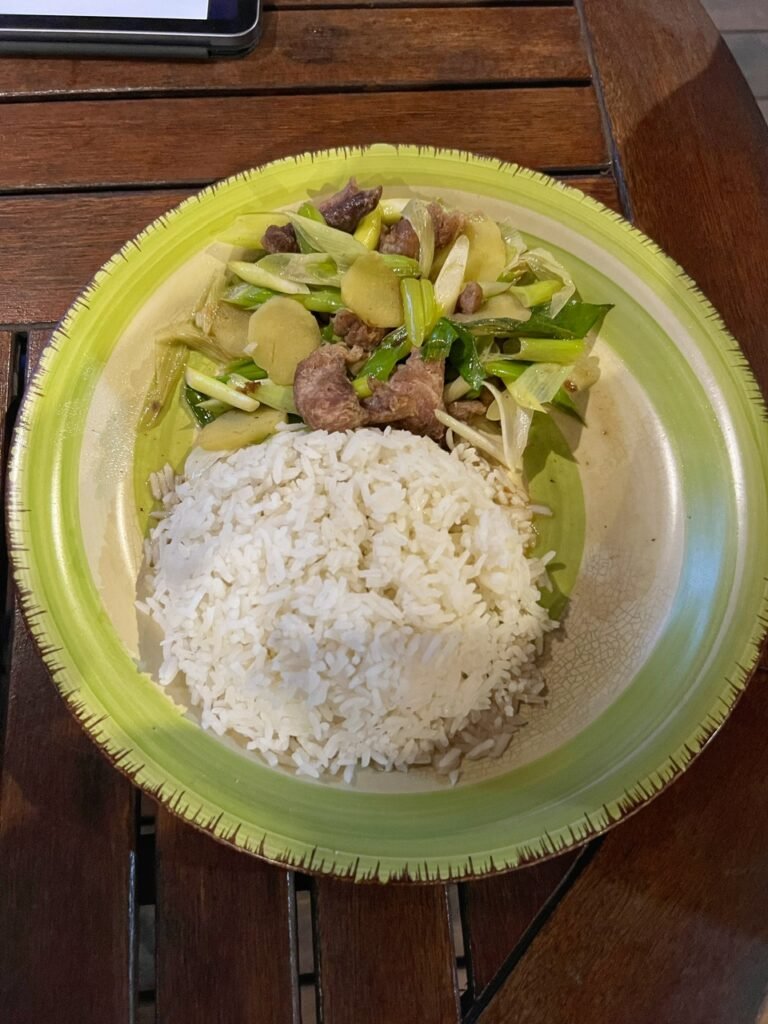
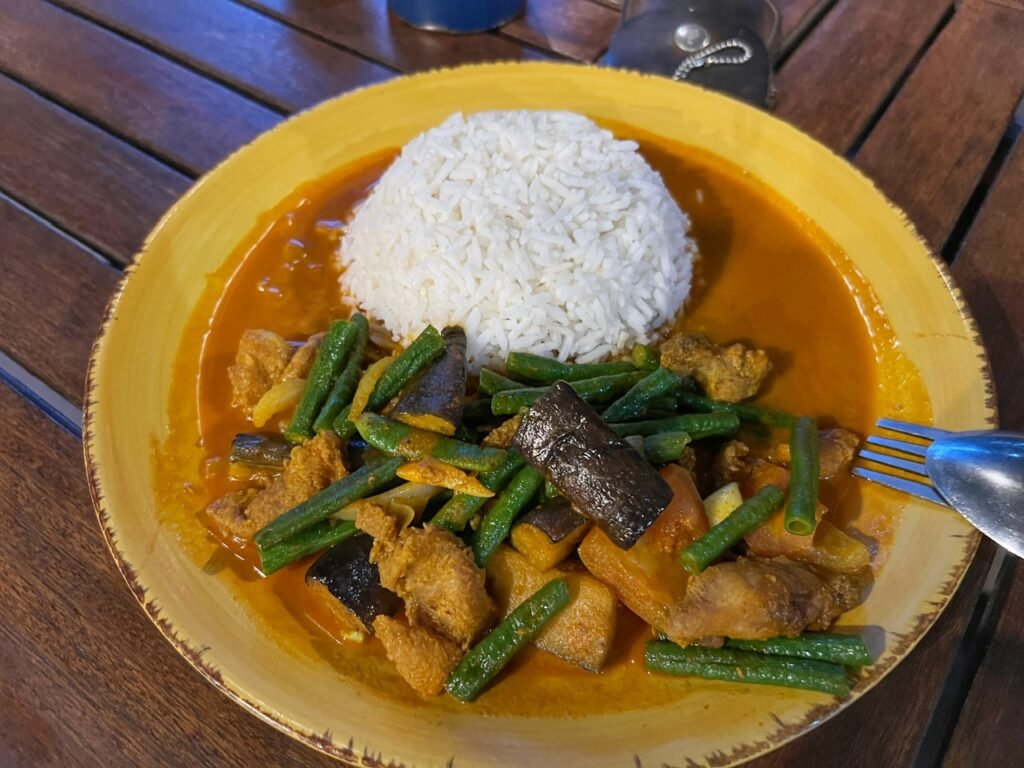
They also had a restaurant for lunch and dinner, which was great because there wasn’t a lot available in Sepilok otherwise! Our dinners were about $3.50 each. Greg had ginger chicken, and Mandy curry fish! Both terrific quality!
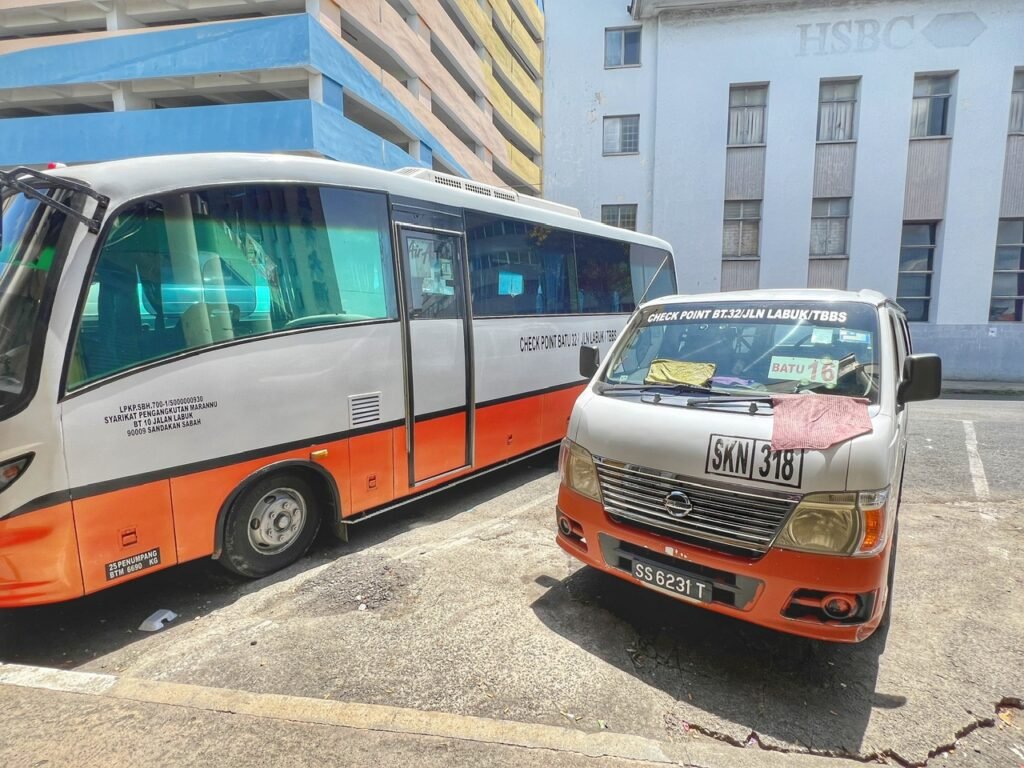
Getting there: We arrived to Sepilok by taking a local bus from Sandakan which we got frustratingly VERY ripped off for. They charged us 20 Ringitts (about $4) for the 40-minute ride when locals were paying about $.20. We understand a foreigner rate, but that is quite a markup. We could have taken a Grab for the same amount.
Sun Bear Conservation Center
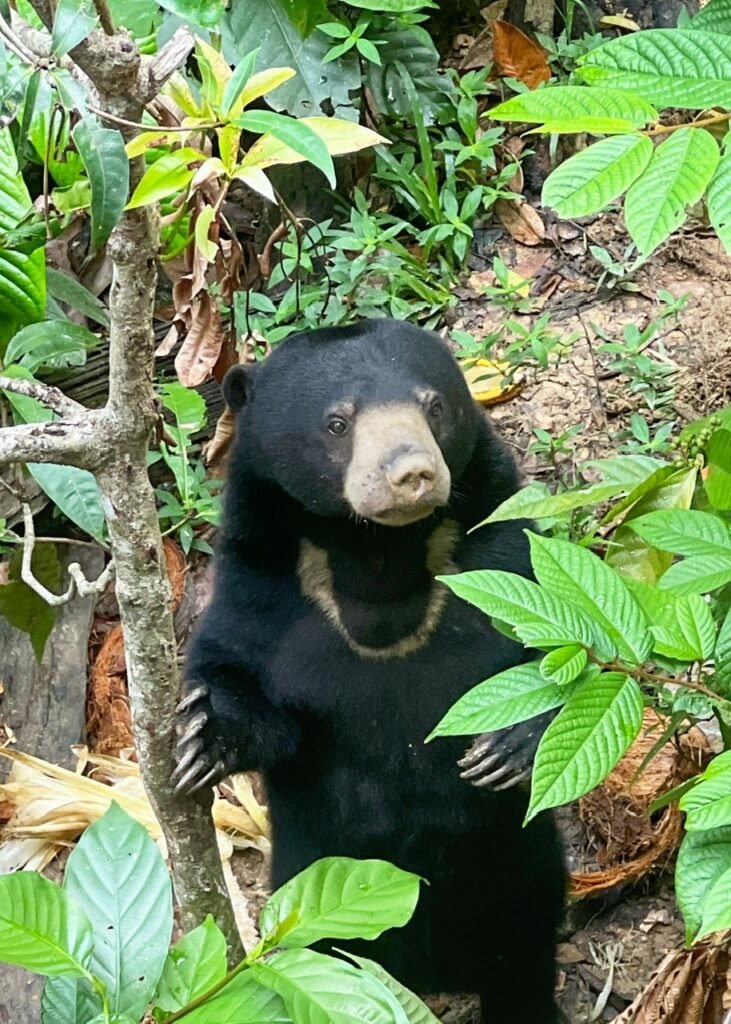
Borneo is the home to the littlest, and arguably cutest, bears in the world. So, while in Sepilok, it’s well worth a visit and $10/person donation to its rescue and rehabilitation facility. Another rescue facility? Yes. These bears tragically continue to be threatened by forest degradation, illegal hunting for bear parts and traditional medicine and poaching to obtain young cubs for pet trade.
The center is on a vast and jungly swath of land near the orangutan center which allows bears to be rehabilitated, fed and for many of them, assisted with reintroduction to the wild.
They typically looked pimped out in the gold “sun” necklace. Bornean sun bears are half the size of Malayan sun bears, which are found throughout South East Asia in the following countries: Eastern India, Southern China, Cambodia, Laos, Myanmar, Thailand, Vietnam, Peninsular Malaysia, Sumatra and Borneo. Scientists believe the smaller Bornean bear has undergone evolutionary adaptation because of food shortage.

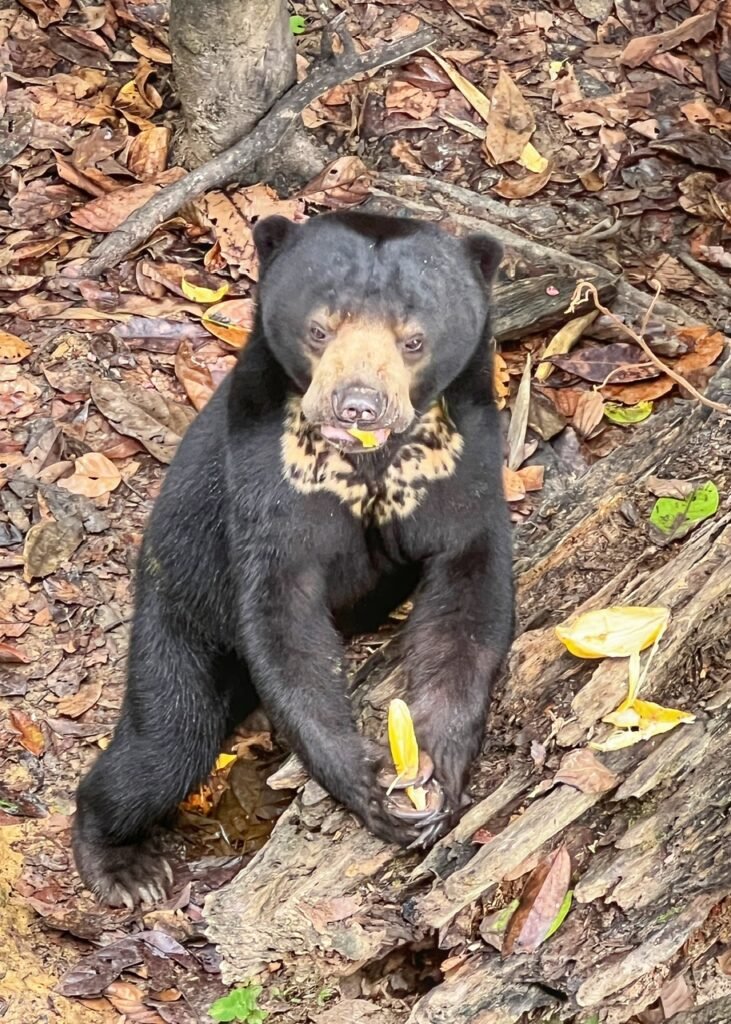
None of that here, however. In fact, we arrived to the center at about 9:30 in the morning just in time for feeding, which was very amusing to watch. This guy stands transfixed as a banana launches toward him. Mmm…two claws up! 👍🏻
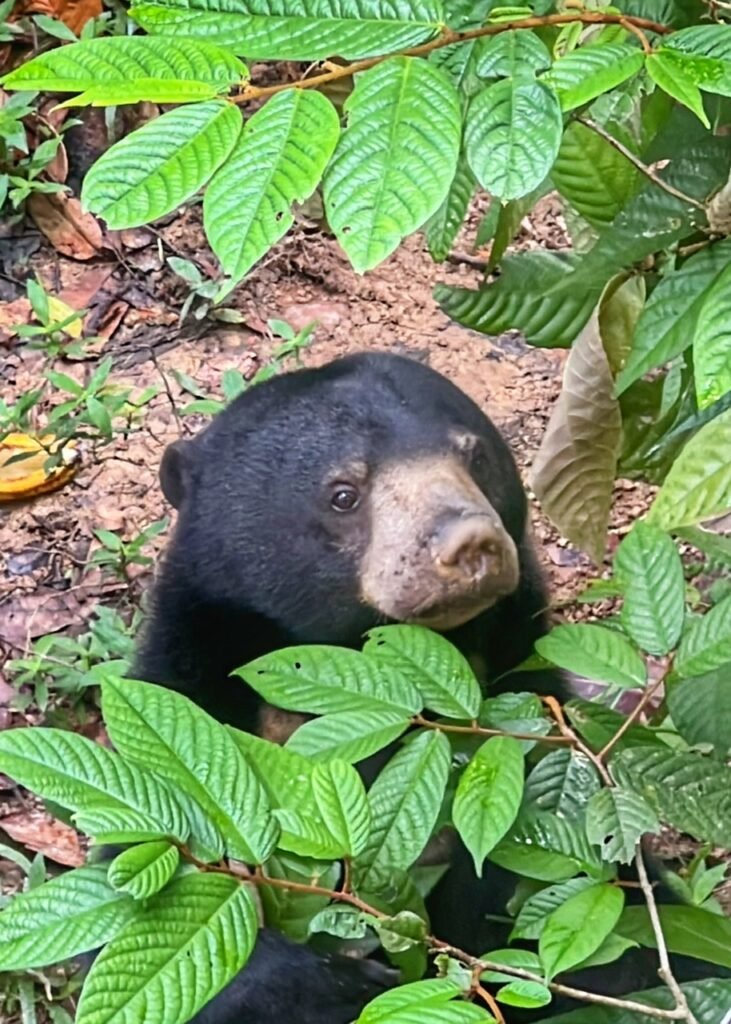
The way they beg like dogs on their hind legs was simply adorable.
Check out the long, curved claws and long tongue…both unique attributes of the sun bear.

More please!

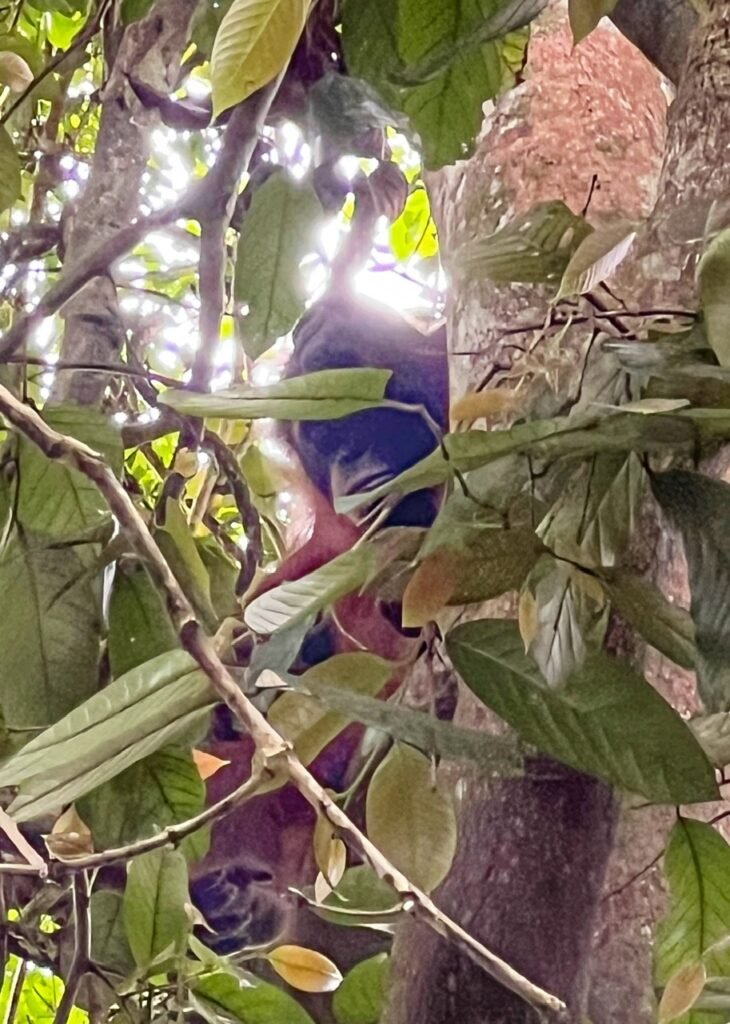
The facility currently houses 43 sun bears. It also apparently houses some drifters from the neighboring orangutan center.
Speaking of orangutans, turn this one up. Mature adult males produce “long calls” roar that can be heard up to 1km- to warn other males in the area and attract nearby females. Wow!
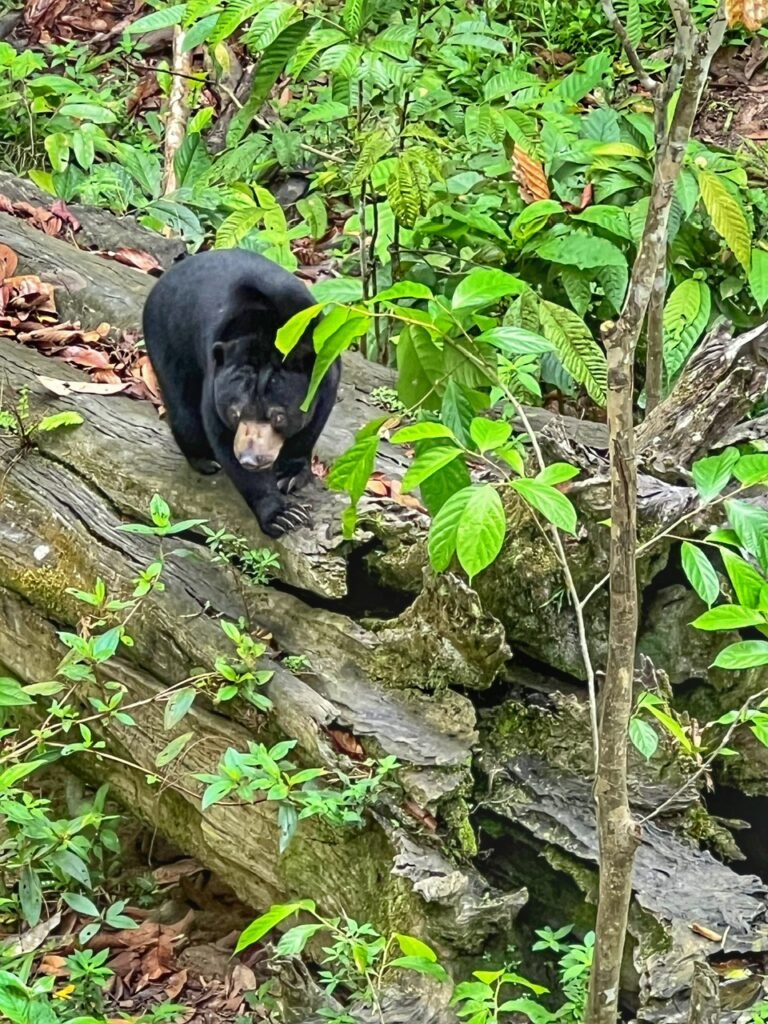
We are so glad a place like this exists to help sun bears. They’ve had a tough existence. For roughly 3000 years, their stomach bile has heartbreakingly been harvested in Chinese medicine for epilepsy, hemorrhoids, heart disease, cancers, colds and….hangovers. Seriously?!?! The bears are taken from the wild and kept in cages while their bile is extracted from their gallbladder. This practice, although becoming more and more often illegal, is still being done in China, Vietnam and even both Koreas. Ugh. Maybe they could just take a paracetamol and drink some water for their hangovers?! 😢😡😬 https://www.cnn.com/2023/06/03/asia/bear-bile-farming-vietnam-china-activism-intl-hnk-dst/index.html
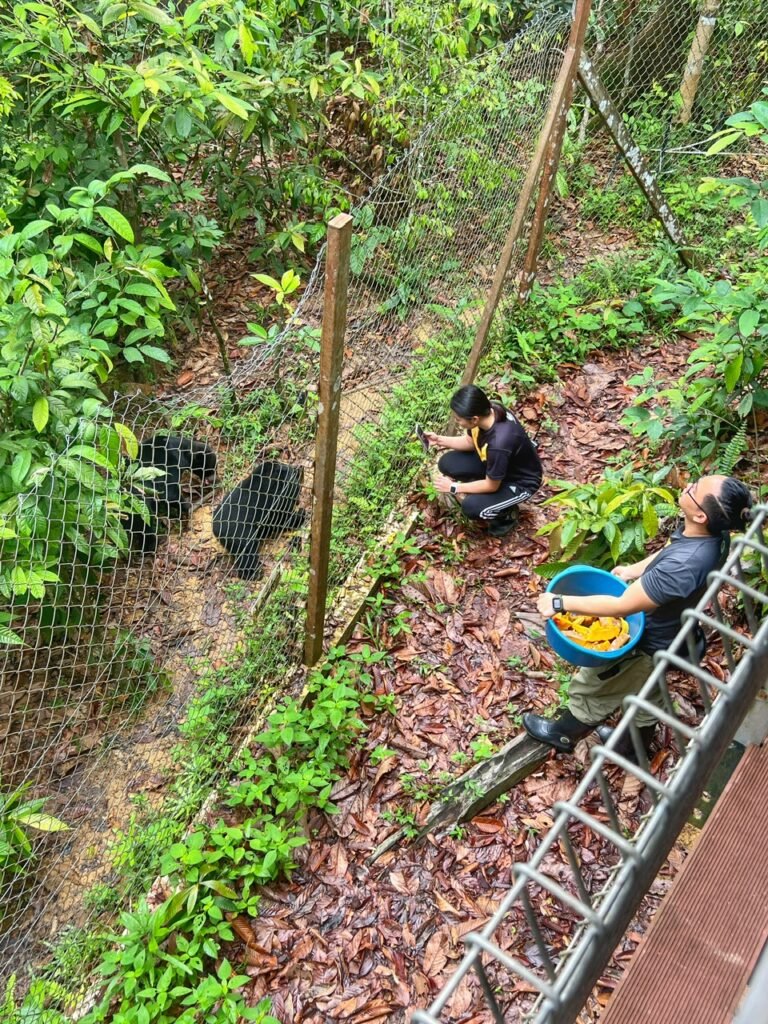
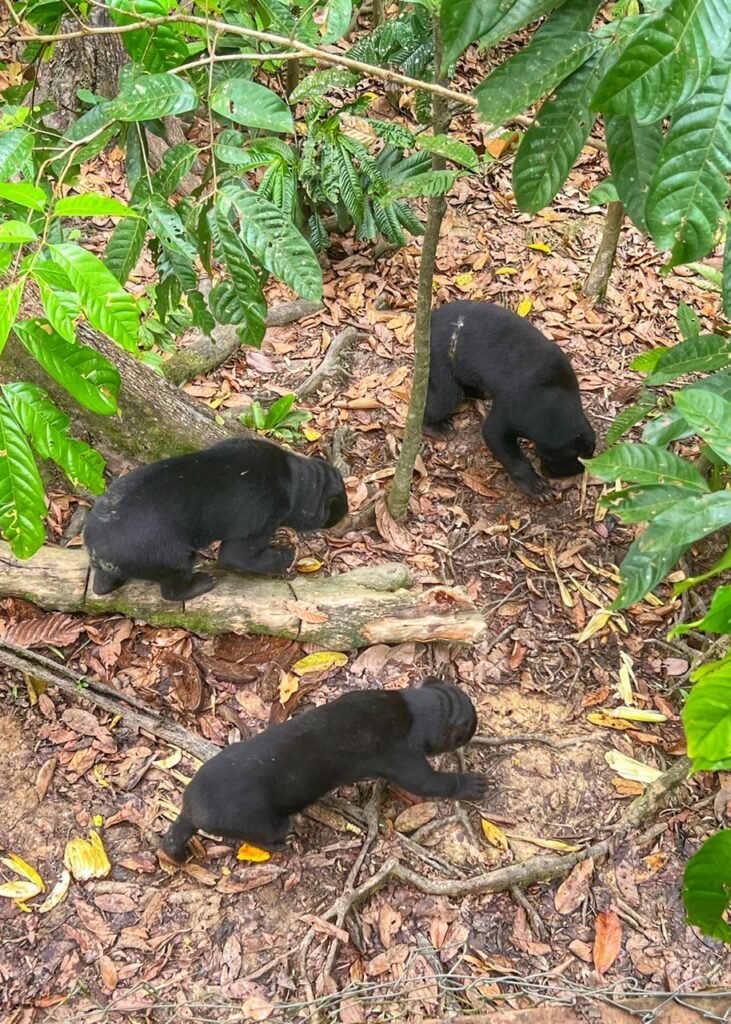
Volunteers feeding the bears below us. This is something we’ve considered doing many times, but is typically prohibitively expensive. But what an experience it must be to work so closely with these guys!
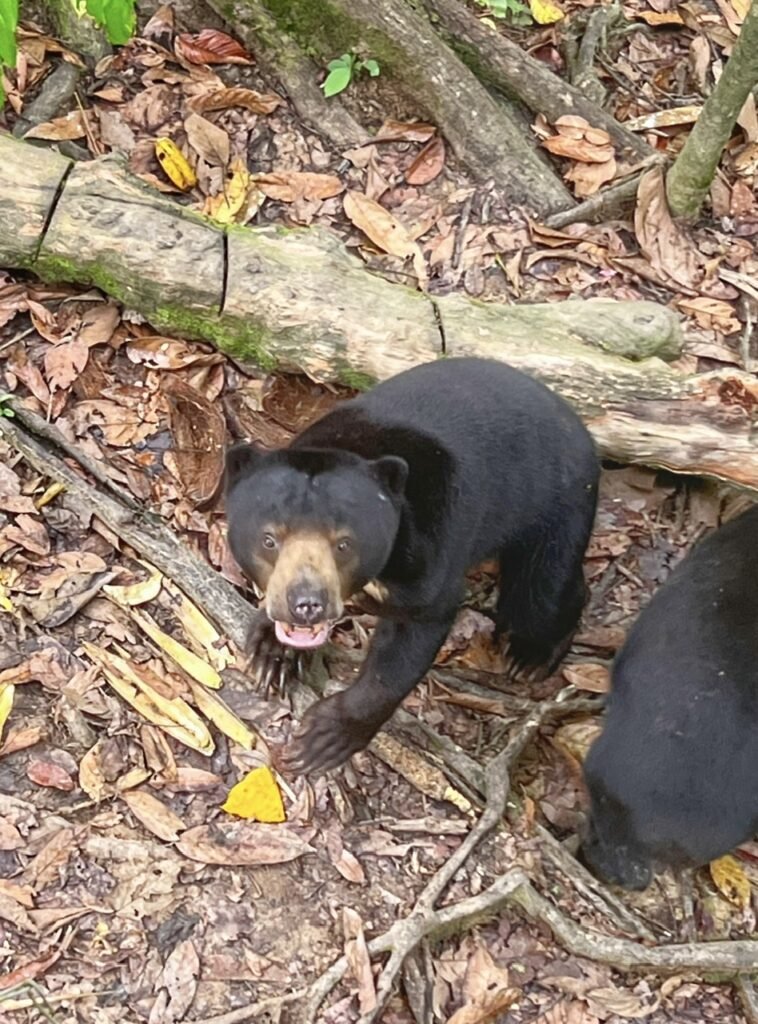
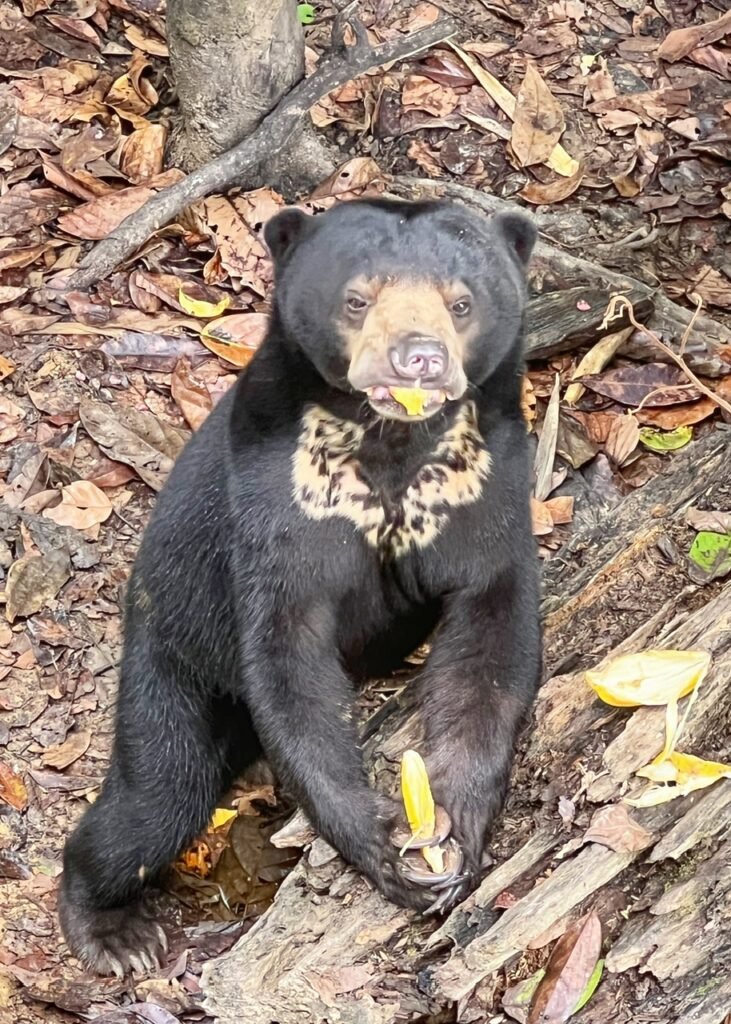
They seem so gentle and sweet! Their individually unique chestmark, in the shape of a sun, is like our fingerprints.
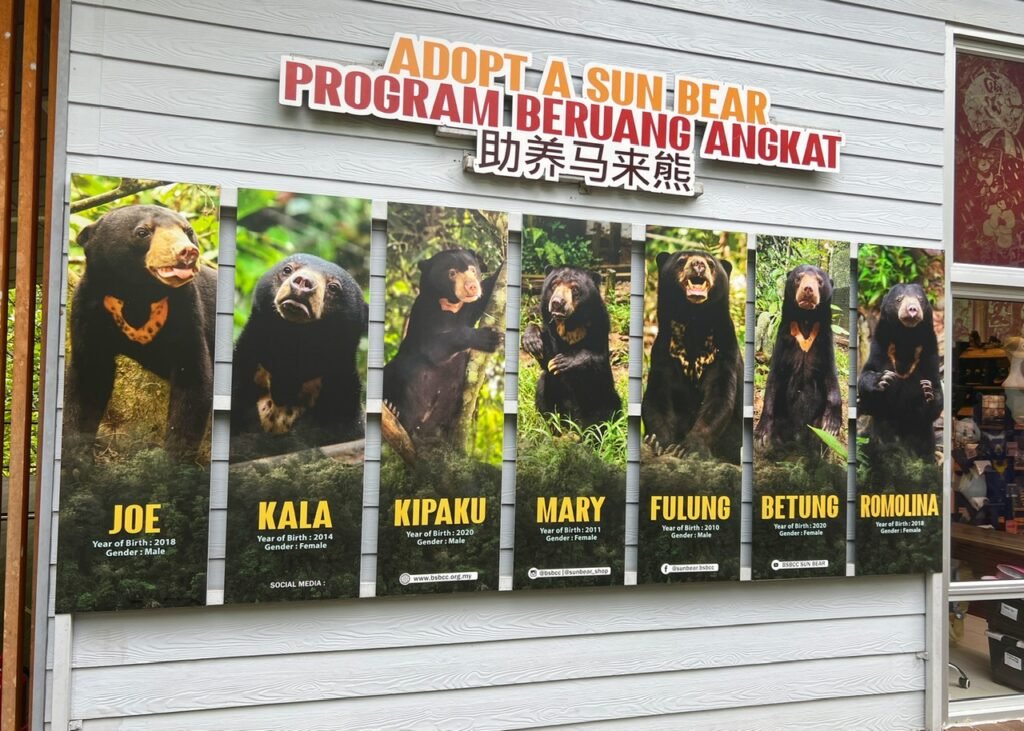
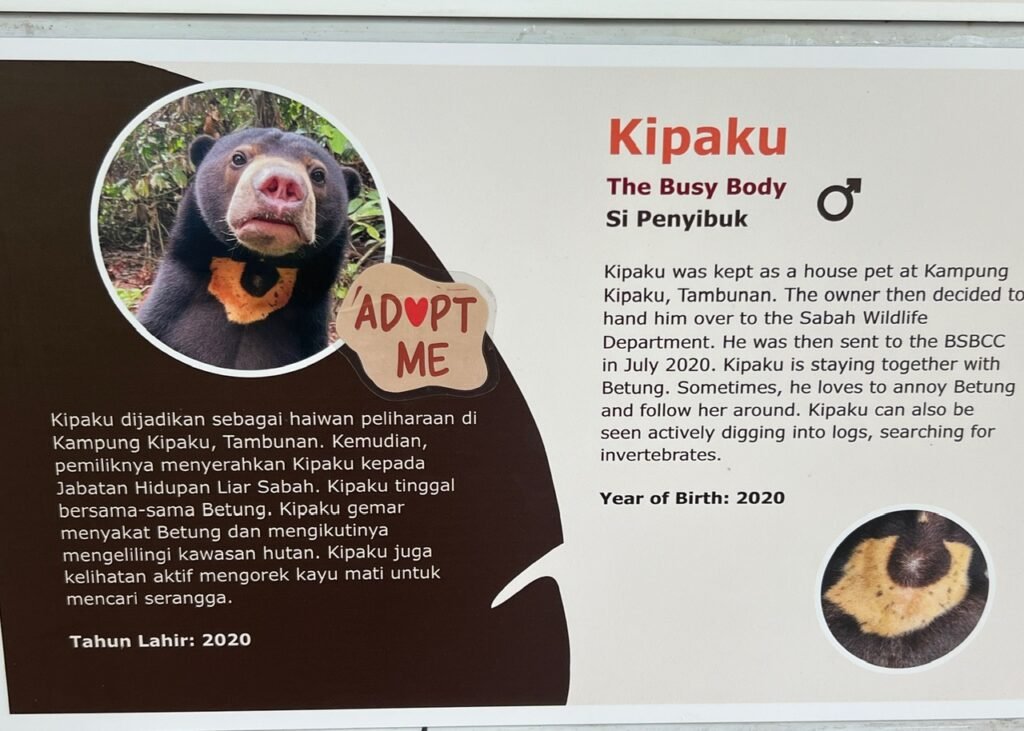
Donations of course, are also accepted, as well as adoptions. One such bio follows for yet another COVID “pet”: Kipaku, born in 2020, was kept as a house pet at Kampung Kipaku, Tambunan. The owner then decided to hand him over to the Sabah Wildlife Department. He was then sent to the BSBCC in July 2020. Kipaku is staying together with Betung. Sometimes, he loves to annoy Betung and follow her around. Kipaku can also be seen actively digging into logs, searching for invertebrates.

Greg standing next to all the world’s bears for a little vertical perspective. The Bornean sun bear is front and center and is obviously not the only one threatened by human activities. 🙁

